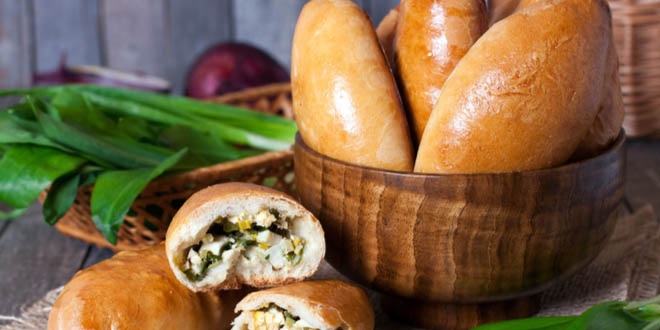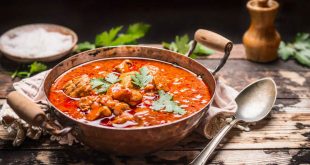Last Updated on March 1, 2023
This summer of 2018 the FIFA World Cup is headed to Russia. There will be games in the westernmost city of Kaliningrad and as far east as Yekaterinburg. These cities are over 2,000 miles apart. While it’s only a three-hour plane ride, many traveling through Russia opt for trains. Not only are trains less expensive, but they also carry a certain allure. This is particularly strong in Russia because of the famed Trans-Siberian Railway.
TAKEAWAY: The Trans-Siberian Railway is a network of railways built from 1891 to 1916. It spreads through 9,289 kilometers (5,772 miles) and 8 time-zones connecting Moscow to Vladivostok. This makes it the longest railroad line in the world and it takes eight days to complete the journey. The Trans-Siberian is connected to another two main branch railways that head to Beijing through China and Mongolia.
If you plan on adding this famous route to your travel plans, there are a few things you should know. Most importantly, bringing your own food. Like most train/plane served food, whatever you find outside is better (and generally less expensive) than what they sell or include inside. With that in mind, here is a list of a few easy-to-carry, authentic Russian eats. And if you make a stop along the way, be sure to try these Eastern European foods to keep you warm.
Bulochka
Sweet rolls are a common Russian eat. These snacks come filled with cheese, poppy seeds, jams, and nuts. Some aren’t filled with anything but are topped with flakes of sugar that resemble kosher salt. Bulochka is the Russian equivalent of brioche: sweet and light. I suggest the spiral rolls with poppy seeds or cinnamon.
Pryaniki
While these cookies are more of a sweet treat, some families will also serve them with breakfast. Any time there is tea, there are also pryaniki because they help cut the bitter and bring out the spice in Russian black tea. Fortunately, they come in multiple sizes. So, whether you are looking for just a small bite to go with your tea or a bigger serving as part of your breakfast, there is a pryaniki for you. Grocery stores seem to sell the bigger cookies, while the smaller option is more readily available in markets. There, you can buy bags of them by weight.
Piroshki
The most famous treat on this list is piroshki. The best translation into English would be “hand pies.” They are stuffed with all sorts of fillings, both savory and sweet. Some of the most common savory options are meat, cheese, mushrooms, and cabbage. Nearly every bakery sells at least meat and cabbage rolls.
Pigs in a Blanket
Unfortunately, the Russian name for this dish isn’t as adorable as the English. Sausage with dough (sosiski s testom) is pretty straight-forward in terms of pastry names. That’s okay because what the Russian equivalent lacks in name-quality, it makes up for in taste. The Russian “pigs” are more like hogs: bigger and fatter. The “blanket” bit is better too. It is sometimes wrapped all the way around the sausage and is always light. If you’re a fan of hot dogs, sausage rolls, or anything like them, this Russian eat is a must.
Zakuski
Zakuski translates to “little tastes” or appetizers. Many foods fall into this category, some of the most famous (and best) being also easy to take on-the-go. Pickled vegetables are at the top of that list. Cucumbers that Russians pickle at home bare little resemblance to those for sale in the West. They are never dark green or flimsy. Instead, they are still bright and crunchy on the inside.
If you love all things pickled, try some of the other vegetables too, such as tomatoes and peppers. If pickled veggies aren’t your thing, try small open-faced sandwiches on rye bread. Put fresh veggies, cheese, or sliced meats on for an authentic meal.
Insider tip: If you are planning on partaking in the famed tradition of drinking vodka on the train, don’t forget this snack. Zakuski are supposed to help keep you sober between shots of vodka, so they are your perfect travel food for a Russian experience.
Tarhun
Tarragon (also known as estragon) isn’t a common flavor in western sodas. This drink will have you questioning why, since it is sweet but spiced. There are many different brands, and each has its own flavor profile. To get a sense of them, check out this article about Tarhun by the School of Russian Area Studies (SRAS.) SRAS is written for and by students, so they often write about tarhun in Russian. If you’re still afraid you won’t be able to identify it in a store, fear not. Tarhun is of an unmistakable bright green.
Pine nuts
Although they are harder to find the further west you go, summer is pine-nut season in Russia. They sell them in pine cones at the markets. You peel away the outer shells from the cone and crack the inner casing to enjoy fresh pine nuts. This is, admittedly, a slower process than the word “snack” implies. But there are few Russian eats better suited for staring out the window though. They accompany the Russian countryside perfectly.
There are plenty of fun foods to try in Russia, and it is amazing how easily they travel, too. These Russian eats are widely diverse with sweet and savory options. Moreover, all of them are easy to find in the nearest market or grocery store. So, if you’ll be on a train in Russia this summer, take advantage of these simple, on-the-go dishes.
 Travel for Food Hub The Food Blog for Travel Lovers
Travel for Food Hub The Food Blog for Travel Lovers









